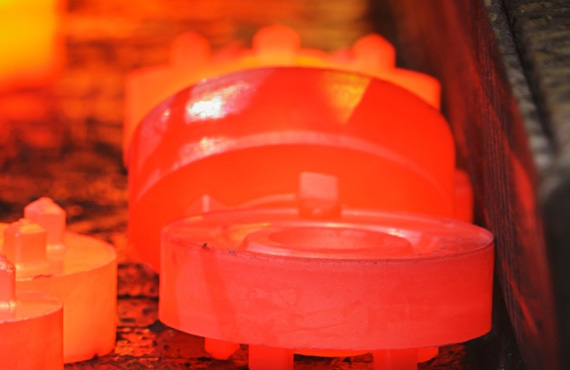Annealing heat treatment is a thermal process applied to relieve internal stresses in metals and alloys, improve formability, reduce hardness, and enhance the microstructure. This process is based on heating the material to a specific temperature, holding it at that temperature for a certain period, and then cooling it in a controlled manner.
Annealing Heat Treatment
Annealing Heat Treatment
How is Annealing Heat Treatment Applied?
- Heating: The material is heated in a controlled manner to a specific temperature. This temperature may vary depending on the type of material and the annealing process to be applied (usually between 500-1100°C).
- Soaking (Holding at Temperature): The material is held at the desired temperature for a certain period to complete the required microstructural transformation. The holding times can vary depending on the material's chemical composition and thickness.
- Controlled Cooling: One of the most critical stages of the annealing process is the controlled cooling of the material. Typically, slow cooling is applied within the furnace to protect the material from cracking or sudden hardening.
Types of Annealing Heat Treatment
Hardening heat treatment is commonly used in various industries that require durability and resistance to wear:
- Full Annealing: Applied to completely soften the material and achieve the best machinability level.
- Stress Relief Annealing: Used to eliminate internal stresses formed after welding, forging, or machining.
- Recrystallization Annealing: Applied to reorganize the grain structure of metals that have been cold worked.
- Softening Annealing: Reduces the hardness of the material, making it easier to shape.
Which Materials Is It Used For?
| Carbon steels |
| Alloy steels |
| Stainless steels |
| Cast irons |
| Copper and copper alloys |
| Aluminum and aluminum alloys |

Main Industries
Annealing heat treatment is widely used in various industries where material softening, improved machinability, and enhanced durability are required:
- Metallurgy and Casting: Used to make metal balls easier to machine and more durable.
- Automotive: Applied to relieve stress and improve formability in parts such as engine components, gearboxes, shafts, and springs.
- Aerospace and Defense: Used to ensure homogeneous material structure and increase fatigue resistance in aircraft and defense industry components.
- Machinery and Manufacturing: Applied to improve machinability and extend lifespan in machine tools, industrial machinery, and hydraulic components.
- Electrical and Electronics: Used to enhance the mechanical strength and flexibility of copper and aluminum conductors.

